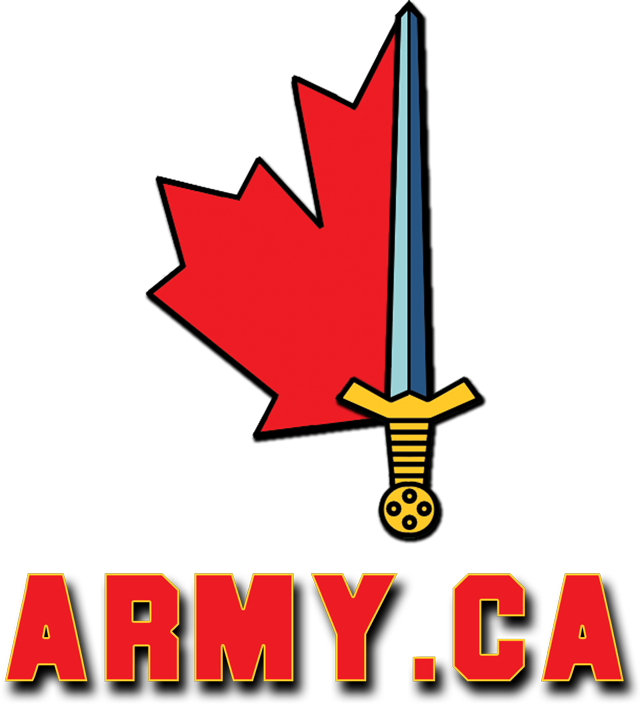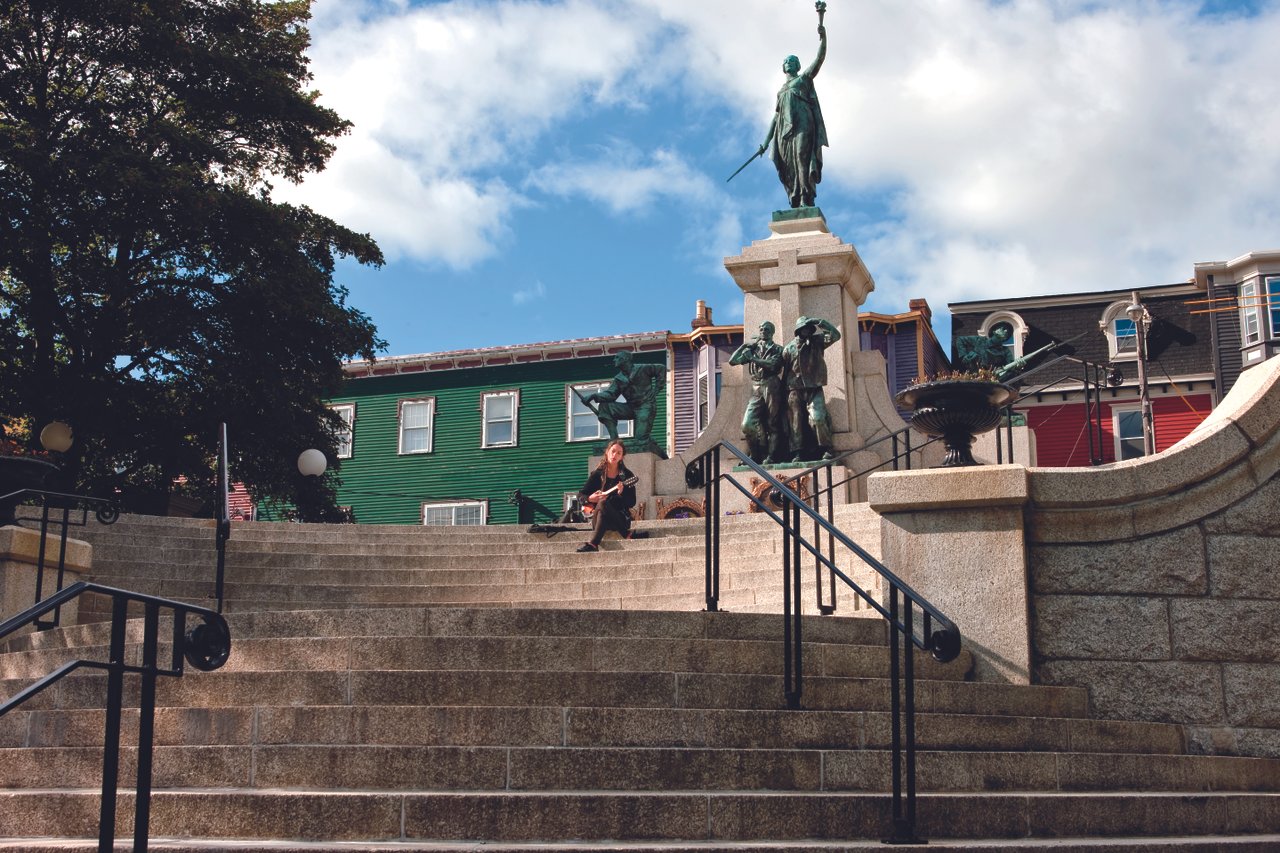Blackadder1916
Army.ca Veteran
- Reaction score
- 2,140
- Points
- 1,160
Another "Unknown Soldier" will be repatriated to Canada his home country, Newfoundland.

The Commonwealth War Graves Commission has granted approval for an unknown soldier from the Royal Newfoundland Regiment who died in France during the First World War to be repatriated, with his remains to be interred at a new tomb at the foot of the National War Memorial on Duckworth Street in St. John's.
The tomb will be the centrepiece of a major makeover for the memorial, which will be unveiled during a dedication ceremony planned for July 1, 2024, the site's 100th anniversary.
It's the first time the commission has approved the repatriation of a second unknown soldier to a country, said legionnaire Frank Sullivan, one of a group of veterans who are spearheading what's called the National War Memorial Centennial Project.
There's also an unknown soldier interred at the National War Memorial in Ottawa.
"This is the first time it's ever happened worldwide, and it's so significant it scares you to think about it," Sullivan said Tuesday morning during an interview at the war memorial with a handful of other legionnaires.
The announcement was made Tuesday morning during a ceremony at Confederation Building.
"One of our fallen heroes, courageous, will be coming home," said Premier Andrew Furey.
Gravesite still needs to be selected
St. John's South-Mount Pearl MP Seamus O'Regan said the specially constructed tomb "will contain the repatriated remains of one of our lost sons, cut down too young, and too soon in the Battle of the Somme."
"We are proud that the unknown soldier who will honour all Newfoundlanders and Labradorians who served and sacrificed, will come from the regiment, and the sacred battlefield at Beaumont Hamel," added Lt.-Col. Lawrence Hatfield, commanding officer of the Royal Newfoundland Regiment.
The Commonwealth War Graves Commission is in the process of selecting a gravesite from which to exhume the remains. It's expected the repatriation will take place next summer, a year ahead of the centennial, said Sullivan.
The plan is to have the unknown soldier placed at Confederation Building in the days leading up to his interment so the public can pay their respects, Sullivan added.
Sullivan said he was inspired to lobby for the tomb after learning the unknown soldier in Ottawa was repatriated from Vimy, site of a massive battle in France involving Canadian units.
Since Newfoundland and Labrador did not become a Canadian province until 1949, Sullivan said he didn't feel the unknown soldier in Ottawa represented the sacrifices of the men and women from what was then an independent country.
"Now we'll have our own who will represent our great province," said Sullivan.
Once interred, the unknown soldier will represent Newfoundlanders and Labradorians who served in all branches of the military.
"Whoever the unknown soldier was, and whatever the unknown soldier did, we know he was from Newfoundland and Labrador," said Veterans Affairs Minister Lawrance MacAuley.
"Soon he will be back, to rest for all eternity in the place that he called home."
And a statement for the CWGC
/www.cwgc.org/our-work/news/unknown-first-world-war-soldier-to-be-repatriated-to-honour-newfoundland-and-labrador-s-fallen/
Remains of unknown soldier to be repatriated for St. John's War Memorial's centennial
A new tomb will be added to the memorial, containing remains of soldier who died during the First World War
These legionnaires were in high spirits Tuesday following an announcement that the National War Memorial in St. John's will have a rededication ceremony for the site's centennial on July 1, 2024. The centrepiece of the makeover is the addition of a tomb of the unknown soldier, with plans to repatriate the remains of a Newfoundland Regiment member who died in battle during the First World War. Pictured here, from left, are Berkley Lawrence, Gerald Budden, Nathan Lehr, Frank Sullivan and Gary Browne. (Terry Roberts/CBC)
The Commonwealth War Graves Commission has granted approval for an unknown soldier from the Royal Newfoundland Regiment who died in France during the First World War to be repatriated, with his remains to be interred at a new tomb at the foot of the National War Memorial on Duckworth Street in St. John's.
The tomb will be the centrepiece of a major makeover for the memorial, which will be unveiled during a dedication ceremony planned for July 1, 2024, the site's 100th anniversary.
It's the first time the commission has approved the repatriation of a second unknown soldier to a country, said legionnaire Frank Sullivan, one of a group of veterans who are spearheading what's called the National War Memorial Centennial Project.
There's also an unknown soldier interred at the National War Memorial in Ottawa.
"This is the first time it's ever happened worldwide, and it's so significant it scares you to think about it," Sullivan said Tuesday morning during an interview at the war memorial with a handful of other legionnaires.
The announcement was made Tuesday morning during a ceremony at Confederation Building.
"One of our fallen heroes, courageous, will be coming home," said Premier Andrew Furey.
Gravesite still needs to be selected
St. John's South-Mount Pearl MP Seamus O'Regan said the specially constructed tomb "will contain the repatriated remains of one of our lost sons, cut down too young, and too soon in the Battle of the Somme."
"We are proud that the unknown soldier who will honour all Newfoundlanders and Labradorians who served and sacrificed, will come from the regiment, and the sacred battlefield at Beaumont Hamel," added Lt.-Col. Lawrence Hatfield, commanding officer of the Royal Newfoundland Regiment.
The Commonwealth War Graves Commission is in the process of selecting a gravesite from which to exhume the remains. It's expected the repatriation will take place next summer, a year ahead of the centennial, said Sullivan.
The plan is to have the unknown soldier placed at Confederation Building in the days leading up to his interment so the public can pay their respects, Sullivan added.
Sullivan said he was inspired to lobby for the tomb after learning the unknown soldier in Ottawa was repatriated from Vimy, site of a massive battle in France involving Canadian units.
Since Newfoundland and Labrador did not become a Canadian province until 1949, Sullivan said he didn't feel the unknown soldier in Ottawa represented the sacrifices of the men and women from what was then an independent country.
"Now we'll have our own who will represent our great province," said Sullivan.
Once interred, the unknown soldier will represent Newfoundlanders and Labradorians who served in all branches of the military.
"Whoever the unknown soldier was, and whatever the unknown soldier did, we know he was from Newfoundland and Labrador," said Veterans Affairs Minister Lawrance MacAuley.
"Soon he will be back, to rest for all eternity in the place that he called home."
And a statement for the CWGC
/www.cwgc.org/our-work/news/unknown-first-world-war-soldier-to-be-repatriated-to-honour-newfoundland-and-labrador-s-fallen/
The Government of Newfoundland and Labrador and the Government of Canada have received approval from the Commonwealth War Graves Commission on the National War Memorial Centennial Project.
An important part of this Project is the repatriation of an Unknown First World War Solider from Northern France. This soldier will be re-interred in a specifically designed tomb at the National War Memorial in St. John’s to represent Newfoundlanders and Labradorians who served in all branches of the military.
This fallen soldier will symbolically honour Newfoundland and Labrador’s war dead from the years before the province became part of Canada in 1949. The process will be to select this Unknown Soldier, transport the remains home and re-inter him in St. John’s. This is similar to process followed when Canada established the Tomb of the Unknown Soldier at the National War Memorial in Ottawa in 2000.
The National War Memorial Centennial Project was initiated in 2019 as a partnership between the Royal Canadian Legion – Newfoundland and Labrador Command and the Government of Newfoundland and Labrador. The repatriation of an Unknown Soldier component was spearheaded in 2020 by the Royal Canadian Legion – Newfoundland and Labrador Command.
The National War Memorial Centennial Project will be unveiled on July 1, 2024. This coincides with the centennial of the Newfoundland National War Memorial, and the 108th anniversary of the Battles of the Somme and Beaumont-Hamel.
Frank Sullivan, Royal Canadian Legion, Newfoundland and Labrador Command said:
“In 1919, Padre Thomas Nangle of the Royal Newfoundland Regiment had a vision, a dream of a National War Memorial in St. John's to remember our fallen. Work commenced in 1919 and during this time, he requested the repatriation of an Unknown Soldier to be part of this memorial. The request was never actioned. With this approval to repatriate an Unknown Soldier by Sir Bill Rollo and the Commonwealth War Graves Commission for the Rededication in 2024, his vision, his dream will be complete.”
The Honourable Andrew Furey, Premier of Newfoundland and Labrador said:
“It is an honour for the Provincial Government to partner with the Federal Government and the Royal Canadian Legion – Newfoundland and Labrador Command on the National War Memorial Centennial Project. Newfoundland and Labrador is the only province in Canada to have a National War Memorial, and now, we will be the only one to have a dedicated tomb component. This, is a reflection of our unique political history and a testament to the important role we had during the World Wars. Today’s announcement is an acknowledgement of Newfoundland and Labrador’s status during the First World War, and the efforts and sacrifices of Newfoundlanders and Labradorians.”
Claire Horton, CBE, Director General, Commonwealth War Graves Commission said:
“We are proud to have been able to facilitate this exceptional step for the repatriation of a Newfoundland soldier from the Western Front who, though unknown, represents the collective contribution and sacrifice of all those who lost their lives in conflict, from Newfoundland and Labrador, for the freedoms we all enjoy today.”




